Any country plot should be surrounded by a fence. This requires the rule, and you feel in your own house, "like a stone wall." During the installation of the fence, one of the most important tasks is to choose a method for fixing the supports for future fences, and the most popular is the concreting of pillars. In this article we will talk about ways to concrete fence.
Choosing a method of concreting fence
If the posts are correct, you can be confident in the stability and reliability of the entire fence. Such a fence will truly protect against penetration, curious eyes and will not fall even from a strong hurricane wind. It should be borne in mind that the design will be constantly exposed to both the weather and from the ground - the intake of soil, freezing and flooding, unfortunately, no one has canceled.
For each specific case, the optimal option is selected.
The following factors affect the choice of the fence installation method:
- the nature of the soil;
- load per posts;
- type of fence;
- material opportunities.
Concretion is possible only for asbetic or metal pipes. If you want to install wooden poles, they should be pre-placed in one of these pipes.
So, depending on the choice of fence, the type of soil and the above factors distinguish between several types of concreting pillars for the fence:
- Dry concreting is the most common way recently. Supposes to drive the intake pillar into a pre-prepared well, filled with a mixture of rubble and sand. Then the design is poured with water and thoroughly tram. This is the fastest and most convenient way, and it could be called ideal, if it would not be a significant drawback - the poles may disturb, if the fence itself is too heavy. Therefore, dry concreting is not applicable with impressive dimensions of sections or forged fences with a large number of metal elements.
- Point concreting - the second popularity method. Many prefer it precisely because of efficiency and efficiency.
- Ribbon concreting is the most expensive way of building a fence. However, if you can afford such a luxury, then your fence will have a little one dozen years.
Spot and tape concreting ensure the reliability and stability of heavy structures. So, they protect the metal rod of the column from corrosion, thanks to the concrete layer. The support is not loosened in the ground and can stand for many years.
However, if the groundwater is located close to the surface, these methods may be ineffective. Even the strongest belt foundation may suffer from spring melting of snow and swelling of the soil. In this case, the pillar is simply extruded from the ground.
Various types of terrain and fitness features assume the use of individual concreting techniques. Therefore, in order to correctly choose technological operations, the nature of the forces should be exposed to concrete structures in the ground.
At different times of the year, the intake poles are subjected to the following influences:
- In the summer, the weight of the very fence itself and the soil resistance is affected.
- In winter, the support pillars experience the tremendous pressure of the soil. Moisture in the ground turns into ice, increasing in size and falling so on everything that is underground. The deeper the soil freezes, the greater the poverty force and the risk of damage to poorly installed columns.
- In the spring, the soil thaws unevenly, which leads to a flipping or fueling the weak supports.
Types of concreting
Dry concreting
The method of dry concreting of the poles, as mentioned above, is to install the supports in the "glass" of sand and rubble. If you want to pull the chain grid or set a small light fencing, this method is suitable as it is impossible. Its main advantage is low cost. If the soil allows, and you do not need a massive fence, you can safely use dry concreting.
Dry concreting posts for the fence is recommended to do on solid non-empty soil.
The process of installing the poles is as follows:
- In the ground, a hole is made using a construction bora. The depth of concreting pillars for the fence by a dry way is 1.2 m.
- The improvised sleeve from the rubberoid, repeating the diameter of the hole is formed. Thus, the pillar waterproofing occurs.
- The pillar is placed in the "heel" sleeve down, after which its vertical is checked and adjusted.
- The space between the sand and rubble is falling asleep between the base and rubberoid. Then it is watered with water and trambet to finally fix the pillar.
Spot concreting
It should only arrange the foundation for the support after you are convinced by the correct boundary. Wells need to be drilled so that the outside side of the fence was located at the very border with the neighboring site.
If your site is located on Earth with a maximum drainage depth of 1.3 m, and groundwater lie at a depth of 1.5 m, in this case it is recommended to place a fenced post to a depth of 1.4 m.
You can drill the well with the help of an ordinary garden bora, however, the optimal tool for this purpose is the Building Bur "TISE". This device is able to expand the opening at the bottom of the well, ensuring greater stability of the design. In addition, such anchor extension will not allow the concrete pillar to push the concrete post during the strong seasonal brightness of the soil.
To make spot concreting of metal pillars for the fence, you must follow the following rules:
- After you have drilled a well, you should form a sandy pillow with a height of about 30 cm. It will ensure good drainage and increase the stability of the support.
- Then it is necessary to insert a protective sleeve from the rubberoid, as in the case of dry concreting.
- By and large, in the first stages, everything happens in the same way as with dry concreting - the pillar is inserted with a "heel" down, vertically adjusts with a level or a plumb.
- When you were convinced that the pillar is strictly vertically, you can pour concrete. For point concreting, it is better to use a M300 brand solution mixed with broken rubble and brick crumbs.
- After the fill, check the horizontality again - this is the last time you can adjust the position of the pillar.
- It remains only to wait for the drying of the concrete mix and proceed to the installation of the very fence.
If the groundwater on your site is too close to the surface, it can seriously complicate the process of installing concrete pillars. There are a lot of ways to solve such a problem, but we propose to consider the most efficient and economical.
If the groundwater lie close to the surface, follow these steps:
- To ensure maximum waterproofing of the support post, on the bottom end of the protective pipe from the rubberoid, the durable polyethylene bag (and better than several).
- Insert the waterproofing into the well, and at the top set the low formwork box. It will not allow the rubberoid tube to turn.
- In the process of laying, the concrete mixture will be tightly pressing the waterproofing material to the walls of the well. At this time, the water accumulated below will rise up, the folds of the polyethylene package will disappear, and all empties are filled with concrete. Thus, it will be isolated from the ground and groundwater.
Useful advice: Use an old bucket without a bottom as a funnel for filling concrete into a well. Do not forget to periodically pinch the bolted concrete with a long wooden rail to reduce the risk of emptiness.
Tape concreting
The finelylated ribbon concrete foundation is applicable to heavy fence structures, provided that the groundwater is pretty deep.
This type of foundation is not recommended to do on bulk and bunched soils. In this case, the layers of the Earth are removed until clay, loam, sand or more stable soil appear. The soil brunch is an important factor when choosing a method of tape concreting. Dusty and fine-grained sands are considered to be a bunched soil, clay and loam - conditionally bunched, changing the indicators as moisture absorb.
The optimal option for the construction of a ribbon foundation is rock, coarse and chip soils. But a reliable base can be imitate, removing the bunched layers of the soil to a more durable and tampering surface.
Stages of the device of a finely visible belt base for the fence:
- Drop the trench throughout the perimeter of a plot of 20 cm wide. The depth of a finely visible foundation for ribbon concreting should be 40 cm.
- Where the pillars will be installed, it is necessary to drill well with a depth of 40 cm.
- From the sheet runneroid to form protective sleeves with a height of 40 cm. The diameter of the sleeves should coincide with the well diameter.
- Sleeves are placed in the wells, after which you drive the poles by controlling verticality.
- Around the pillars to make a reinforcing belt.
- Pits and trench fall asleep with a mixture of sand and rubble to a height of 25 cm. Hiding a mixture with water and carefully tumped. As a result, it should remain unfilled 15 cm from the height of the trench.
- At the bottom of the trench, put the reinforcement with a thickness of 10-12 mm. Stop follows in two rows, and each of the rods should be located 5 cm from the edge of the trench. Two top rows to put 10 cm from the ground. Binding fittings best welding, but if you do not have the appropriate equipment, the knitting wire is suitable.
- When the concrete mixture is freezing (it takes about a week), it is necessary to carry out the foundation to be waterproofing - remove the formwork and cover the side surfaces of the concrete structure with protective composition (bitumen mastic, rubberoid, polymer mixtures).
- After completing all the work, it is necessary to fall asleep all the remaining empties with a sandy mixture. It is necessary to rub it extremely careful not to damage the waterproofing layer.
Finally, the foundation will find it only 3-4 weeks after the fill. Duration of drying depends on climatic conditions and season. Throughout the entire period of drying, it is recommended to protect the ribbon foundation from the effects of precipitation and direct sunlight, covering the film.
If you can choose the correct way of concreting pillars for the fence and do not regret it for strength and money, your home will be reliably protected by a strong fence.

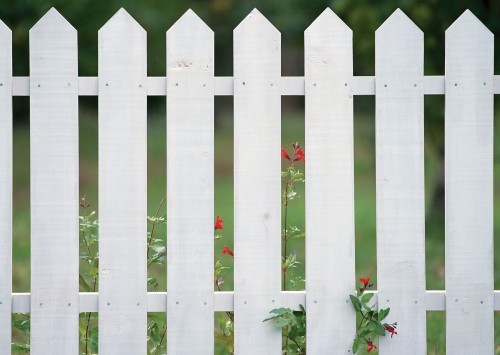

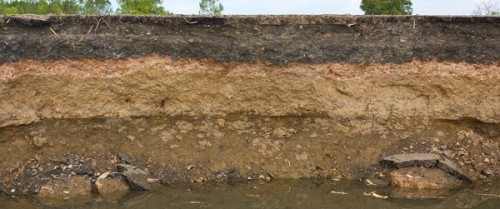
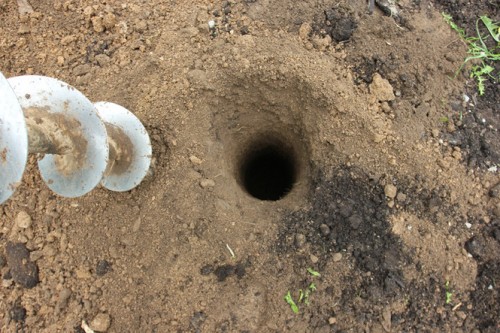
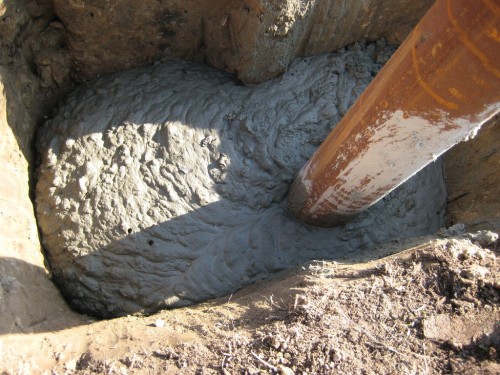
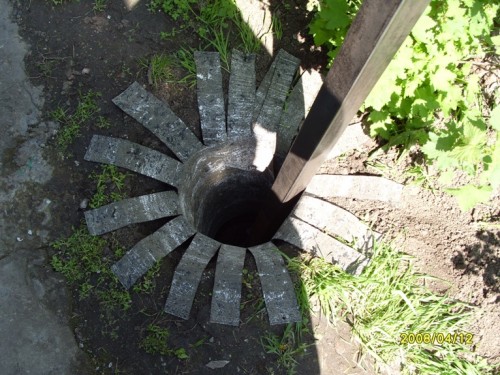
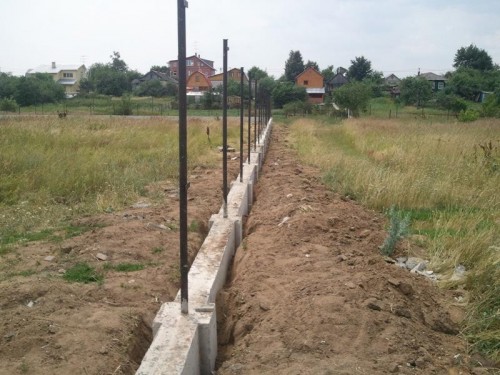









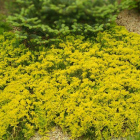

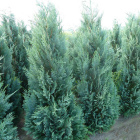
 Start a discussion ...
Start a discussion ...